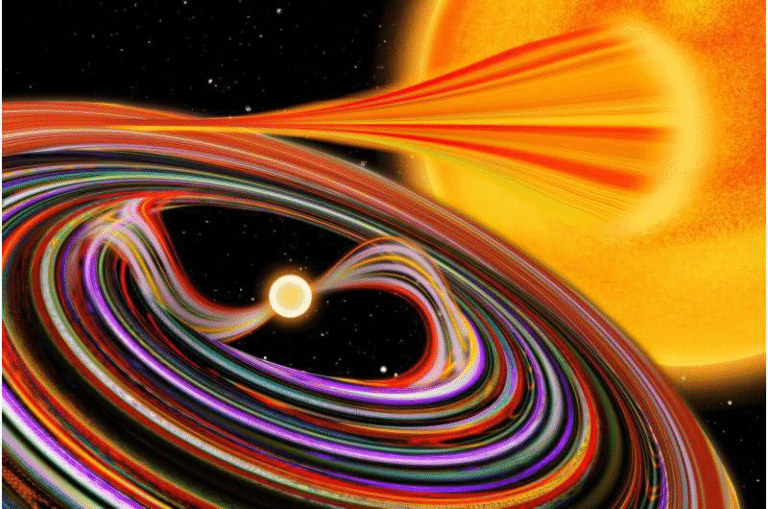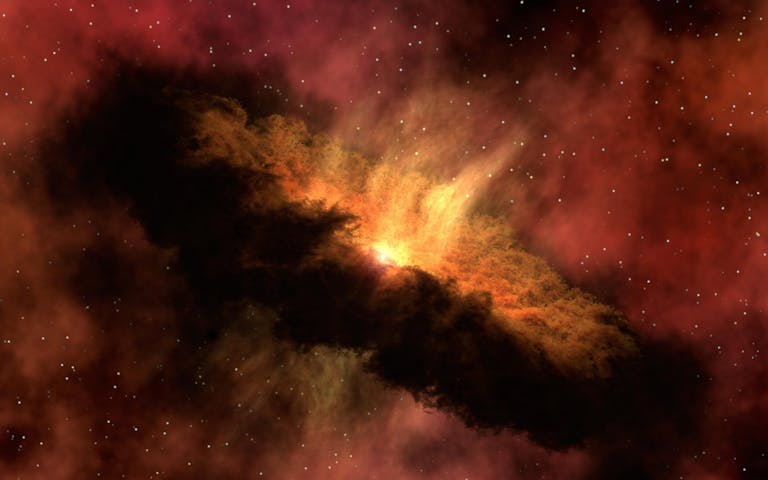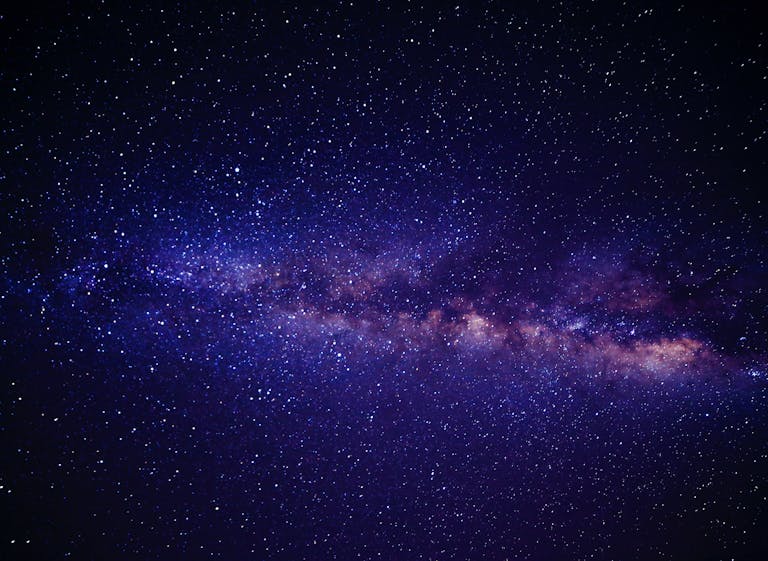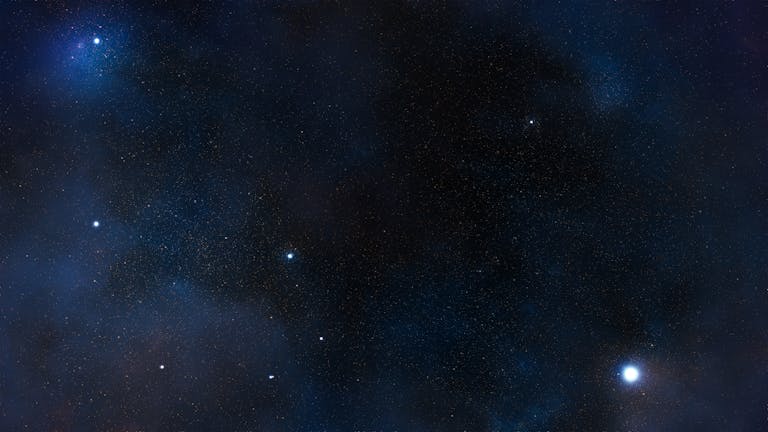Black Holes and Ultra-High-Energy Cosmic Rays: A New Explanation Emerges

For more than 60 years, scientists have puzzled over the origin of ultra-high-energy cosmic rays—particles so energetic they defy easy explanation. These particles, detected on Earth, carry staggering amounts of energy, far exceeding what humans can produce in even the most advanced particle accelerators. Now, a team from the Norwegian University of Science and Technology (NTNU), working with international collaborators, has proposed a fresh explanation: winds from supermassive black holes may be the driving force behind these mysterious particles.
What Are Cosmic Rays?
Despite the name, cosmic rays are not rays at all. Instead, they are tiny particles, mostly protons or atomic nuclei, that travel through space at nearly the speed of light. The name stuck for historical reasons, but what really matters is their extreme energy.
Cosmic rays span a wide range of energies, from those generated by everyday solar activity to the ultra-energetic particles detected on rare occasions. The ultra-high-energy cosmic rays (UHECRs) are especially baffling. First discovered in 1962, these particles can reach energies up to 10²⁰ electron volts. To put this into perspective, a single proton can carry as much energy as a tennis ball smashed by Serena Williams at 200 km/h.
For comparison, the Large Hadron Collider (LHC) in Switzerland and France, the most powerful human-made accelerator, produces particles that carry about a billion times less energy than these cosmic visitors.
Why Are They a Puzzle?
Scientists have long assumed that cosmic rays must originate in the universe’s most extreme environments: exploding stars (supernovae), spinning neutron stars (pulsars), gamma-ray bursts, or the violent surroundings of active black holes. But the ultra-high-energy events don’t quite fit neatly with any of these explanations.
The reason is simple: the process of accelerating particles to such colossal energies requires special conditions, like extremely strong magnetic fields, shock waves, and vast energy reservoirs. While supernovae and pulsars can accelerate particles, they may not reach the top energy ranges consistently. Similarly, gamma-ray bursts, though powerful, occur too infrequently to explain the observed cosmic-ray flux.
Enter the New Study
The new study comes from NTNU’s Department of Physics, led by PhD fellow Domenik Ehlert, associate professor Foteini Oikonomou, and postdoctoral fellow Enrico Peretti from Université Paris Cité. Their focus: supermassive black holes and the powerful winds they generate.
Most galaxies—including our own Milky Way—host a supermassive black hole at their centers. The one in our galaxy is known as Sagittarius A*, but it is currently in a relatively quiet state. In contrast, many active black holes consume huge amounts of material, sometimes several times the mass of the Sun each year.
When material falls toward a black hole, not all of it gets swallowed. Some of it is blasted back out in the form of winds, moving at astonishing speeds—up to half the speed of light. Around half of all active supermassive black holes are thought to produce such winds.
These ultra-fast outflows (UFOs) have been known for about a decade. They are so powerful that they can reshape entire galaxies, blowing away the gas needed for star formation. But the NTNU team focused on something much smaller in scale: whether these winds can accelerate particles to the extreme energies seen in UHECRs.
The Physics Behind It
The researchers modeled what happens when the winds from black holes hit surrounding matter and create termination shocks—regions where particle acceleration can occur. Through processes like diffusive shock acceleration, protons and heavier nuclei can gain energy step by step, bouncing back and forth across the shock front.
Their calculations show:
- In some extreme UFOs, iron nuclei could, in principle, be accelerated to nearly 10²⁰ eV, matching the highest energies observed.
- In most cases, however, nuclei are broken apart or lose energy due to interactions with surrounding photons, limiting their maximum energies to 10¹⁶–10¹⁷ eV.
- Protons and neutrons fare better. Many UFOs allow them to escape at energies above 10¹⁸ eV.
- About 10% of observed UFOs might allow lighter nuclei (like helium or nitrogen) to reach above 10¹⁷.6 eV.
This suggests that UFOs could account for a major portion of the observed cosmic rays, particularly in the “sub-ankle” energy range, where the transition from Galactic to extragalactic sources occurs.
How Energetic Are These Particles?
The energy scale is hard to grasp. One electron volt (eV) is the energy gained by a single electron when accelerated through one volt of electric potential. In everyday technology, like batteries or electronic circuits, we talk about a few volts.
Cosmic rays at 10²⁰ eV, however, pack as much energy into a single atomic nucleus as a thrown baseball or tennis ball. The fact that something so tiny can carry so much energy is one of the reasons this field is so fascinating.
What Happens When They Hit Earth?
Fortunately, these extreme particles are not dangerous at ground level. When they hit Earth’s atmosphere, they collide with air molecules and create a cascade of secondary particles. By the time anything reaches the surface, it’s harmless—just part of the normal cosmic radiation we all live with daily.
The situation is different for astronauts, however. Cosmic radiation, especially from our Sun, poses a serious risk in space. High-energy cosmic rays from beyond the galaxy are rare enough that the odds of one passing through an astronaut are extremely slim. Still, cosmic radiation exposure remains a challenge for long-term missions.
Airline crews, on the other hand, are safe. While they receive slightly higher radiation doses than people on the ground, the high-energy particles studied in this research are too rare to be a concern.
Other Possible Sources
Before this UFO hypothesis, scientists explored several other potential sources of UHECRs:
- Gamma-ray bursts: Extremely powerful but short-lived cosmic explosions.
- Starburst galaxies: Galaxies with extremely high star-formation rates.
- AGN plasma jets: Relativistic jets of matter launched from black holes.
Each of these environments has the necessary energy conditions, but none has yet been proven as the definitive source. The UFO model doesn’t rule them out but adds another strong candidate to the mix.
Why This Hypothesis Stands Out
What makes this new model appealing is that it aligns with known astrophysical conditions:
- Ultra-fast winds are common in active galaxies.
- The energetics of these winds are sufficient to explain the observed particle flux.
- The chemical composition of cosmic rays in certain energy ranges fits better with this model than with others.
The researchers emphasize that this is not a definitive answer—it’s more of a “maybe” backed by strong evidence. What makes it exciting is that their model is testable.
Testing the Theory with Neutrinos
If UFOs really accelerate particles to ultra-high energies, they should also produce neutrinos—tiny, nearly massless particles that rarely interact with matter. These neutrinos would carry information about the processes happening near black holes.
The NTNU team predicts that UFOs could generate neutrinos peaking at energies of a few peta-electronvolts (PeV). Detecting such neutrinos would be a major step toward confirming or disproving the theory.
Future experiments in neutrino astronomy could put this hypothesis to the test, providing a clear multimessenger signal to back up the model.
A Broader Look: Supermassive Black Holes and Their Impact
Supermassive black holes are not just cosmic vacuum cleaners. They shape galaxies in several ways:
- By consuming gas, they regulate star formation in their host galaxies.
- By launching winds and jets, they distribute energy across intergalactic space.
- By producing intense radiation, they can outshine entire galaxies when active.
The study of these black holes has revealed that they are central players in cosmic evolution. The fact that they might also be behind the most energetic particles in the universe only adds to their reputation as the most extreme objects we know.
Looking Ahead
The NTNU team acknowledges that more work is needed. While their model fits many observations, there is no direct proof yet. Future observations of cosmic rays, gamma rays, and neutrinos will be critical in verifying or refining the idea.
Even if UFOs are not the sole source of UHECRs, they may play a key role in filling the gaps in our understanding of how the highest-energy particles are produced and distributed across the universe.
Final Thoughts
This research brings us a step closer to solving one of the longest-running mysteries in astrophysics. Ultra-fast winds from supermassive black holes provide a plausible, testable, and physically grounded explanation for ultra-high-energy cosmic rays. It’s not a complete answer yet, but it shows how much progress can be made when astrophysicists combine observations, detailed simulations, and theoretical models.
As with many discoveries in space science, the real excitement lies in the fact that we now know where to look next—neutrino observatories may soon tell us whether black hole winds truly are the cosmic particle accelerators we’ve been searching for.





